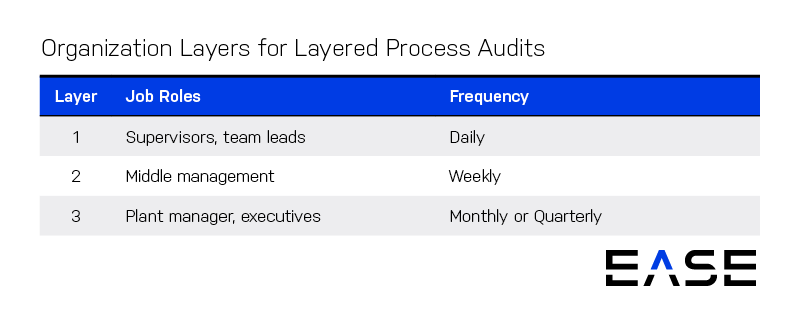Comparing GM and FCA Layered Process Audit Requirements in IATF 16949


In 2017 and 2018, respectively, General Motors (GM) and Fiat Chrysler (FCA) both released new customer-specific requirements that suppliers must meet for IATF 16949:2016 certification. Among other topics, the automakers outline layered process audit (LPA) requirements, each putting their own spin on these high-frequency checks aimed at process standardization.
If you’re a supplier for both original equipment manufacturers (OEMs), it’s important to understand what the two sets of requirements have in common—and where they’re different.
Understanding the details is the only way to create an LPA program that’s streamlined and ensures customer satisfaction. Here we compare the two sets of requirements and summarize best practices for an LPA program that satisfies both of them.
Creating an LPA Program that Satisfies Both OEMs
If you are a supplier to both GM and Fiat Chrysler, you’ll need to think about how you to structure your LPAs to ensure compliance with minimal complexity.
An LPA program that meets both sets of OEM requirements should have:
- A set audit schedule outlining participation frequency at each layer
- Audit participation from all departments and management levels, including all members of senior management
- Audits that take place at least once per shift, with senior management conducting audits weekly
- Detailed record-keeping of audit findings and completion
- A defined process for non-conformances involving steps such as on-the-spot mitigation, containment, corrective action and/or escalation for management review
- A process for updating questions based on customer complaints, corrective action verification and other identified risks
- A structure based on AIAG’s CQI-8 Layered Process Audit Guideline

The Link Between LPA Automation and Customer Satisfaction
If you’re managing your LPA program with paper-based checklists and/or manual spreadsheet tracking, meeting all of these requirements may be a tall order. Many of the requirements reflect problems OEMs see during customer audits, including:
- Lack of management participation
- Poor record-keeping and review of findings
- Incomplete corrective action processes that allow problems to continue
- Checklist questions that don’t change, even after a complaint or corrective action
A customer isn’t going to be happy if they visit your plant and see checklists sitting in a pile being ignored. Conversely, OEMs are often genuinely impressed when auditing suppliers have implemented automated LPA software, with features such as:
- Simplified scheduling for a high volume of audits across all layers of management
- Automated email notifications and escalations to managers when people miss audits
- Mobile audit apps that make it easier to complete audits, leading to higher audit completion rates
- Detailed record-keeping and instant access to LPA reports and findings
- Links to corrective action tracking to effectively address non-conformances
- Easy checklist updating to address complaints and verify corrective actions
When you get down to it, designing an LPA program that keeps customers happy isn’t just about looking at the individual requirements. You have to go beyond compliance, digging into the motivation behind them in creating a system based on accountability and building a sustainable culture of quality.
